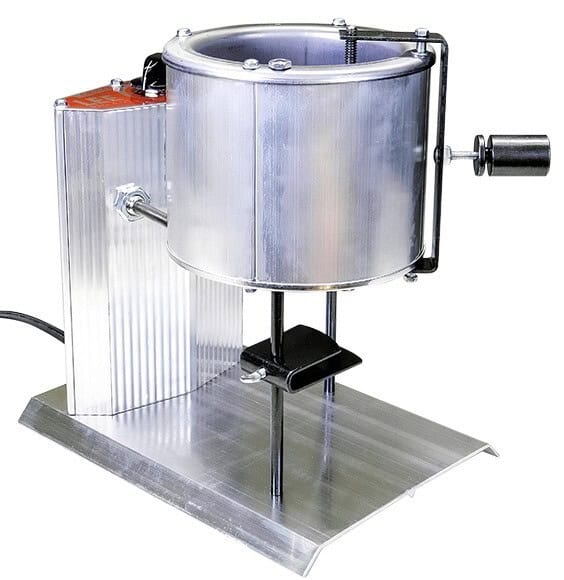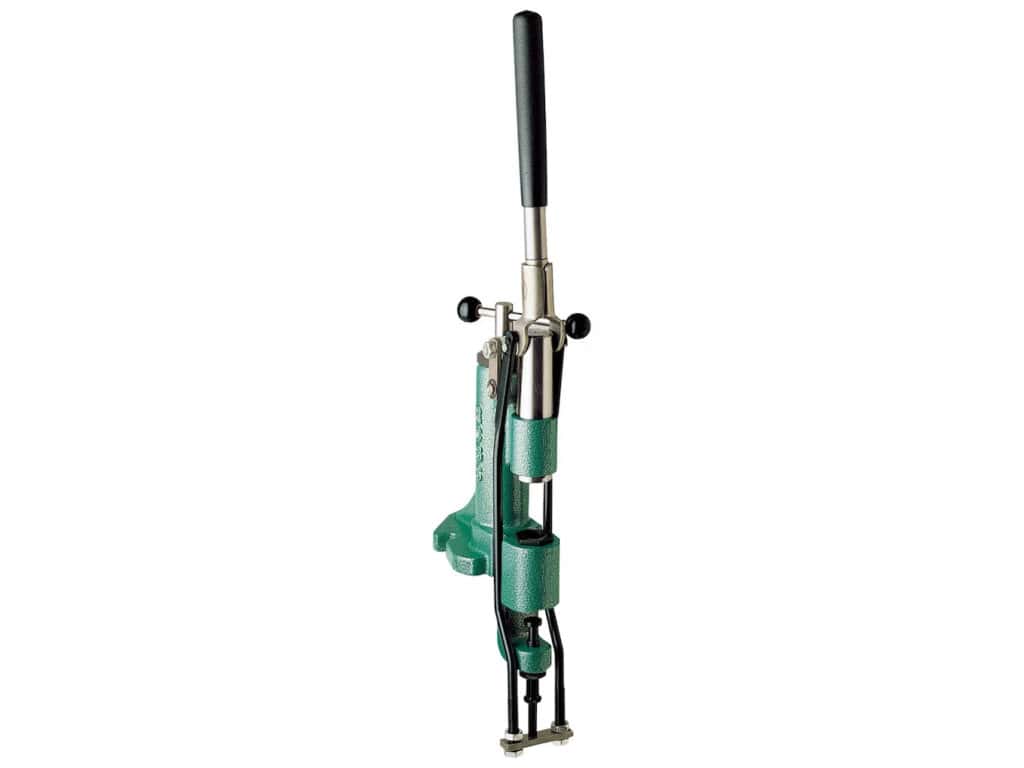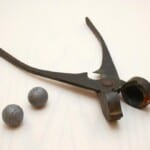
Bullet casting, a part of hand-loading, is a craft favored by shooting enthusiasts who wish to maintain complete control over their shooting experience. This involves using molds, lead melting pots, and various other tools to create your ammunition. For those contemplating venturing into bullet casting, certain aspects need careful attention. This guide will serve as an all-inclusive introduction to bullet casting, focusing on molds, melting pots, lubrication, flux, protective gear, and more.
Choosing the Right Molds

The initial step in bullet casting requires the selection of an appropriate mold. Molds come in a variety of shapes and sizes, each tailored to a specific bullet caliber and design. Conventionally, molds are crafted from steel or aluminum blocks and are purposed to form a particular bullet caliber. Each mold is accompanied by a sprue plate, useful for removing surplus lead.
When opting for a mold, contemplate the design of the bullet you want to create. Round nose, flat nose, hollow point, and various other shapes are available, each ideal for differing shooting uses. Another consideration is the mold's cavity number. Single-cavity molds generate one bullet at a time, whereas multi-cavity molds can produce numerous bullets simultaneously, boosting productivity.
Some molds, such as those sold by Lee, come with handles already attached while others, such as the ones sold by Lyman, require that you purchase the handles separately. Lee tends to have the most moderately prices molds.
Molds should be thoroughly heated before adding any molten metal to them. Failure to properly heat the mold will result in bullets that are wrinkled so don't fill out the mold. Fortunately, failures can be thrown back into the melting pot to try again.
In addition to bullet molds, you will likely want to purchase an ingot mold. This is used to pour out the remainder of the molder metal you've been working with to create bars or ingots for storage.
Utilizing Lead Melting Pots
The lead melting pot is an integral part of bullet casting. This equipment melts the lead or lead alloy used to cast your bullets. The pot size varies, with larger pots capable of holding more metal and maintaining a steadier temperature, a critical element for bullet quality. Electric melting pots are often favored for their precise temperature management. Moreover, it is vital to maintain cleanliness in the melting pot to prevent impurities from compromising bullet quality.
Dippers Vs. Bottom Valves

Transferring molten lead from the pot to the mold is a task that can be accomplished using dippers or bottom valves. Dippers are akin to ladles and are used to scoop molten lead and pour it into the mold. While they are cost-effective and simple to use, dippers demand a steady hand to prevent spillage.
Conversely, bottom-pour melting pots come with a valve at the bottom, enabling molten lead to be released directly into the mold. This method can offer greater accuracy and tidiness compared to a dipper, but it necessitates a high-quality pot to ensure there is no leakage or dripping from the valve, which could impact bullet quality.
Flux in Bullet Casting
In bullet casting, flux plays a crucial role. It's a substance used during the melting process to remove impurities from the molten metal and promote a more uniform mix. You can purchase flux, or simply use candle wax. The author uses candles purchase inexpensively from the dollar store as flux - works well. Adding flux to the melt assists in bringing contaminants to the surface, making them easier to skim off. This ensures a purer alloy for bullet casting, thereby enhancing bullet quality and consistency.
Bullet Hardness: Quenching and Hardcast Bullets
Bullet quenching involves rapidly cooling the bullets after casting, typically achieved by immersing them in a bucket of water. This process can result in harder bullets, advantageous for specific shooting types. However, your bullets' hardness will primarily depend on the metal used in the casting process.
Hardcast bullets, as the name suggests, are particularly hard. They're made from lead alloyed with tin and antimony. These bullets are more durable and maintain their shape better on impact, making them ideal for hunting and shooting through tough targets.
Bullet Lubrication
Lubrication forms another critical aspect of bullet casting. Post casting, bullets need to be lubricated to lessen friction during firing. Without sufficient lubrication, the bullet could lead the gun barrel, which could impair accuracy and potentially damage the firearm. There are a wide variety of bullet lubricants available, including products based on wax, oil, and grease.

Bullet Sizing for Precision and Consistency
Following the casting, quenching, and lubrication processes, bullet sizing is the final step to ensure your homemade bullets are the correct diameter for your firearm's barrel. Bullet sizing is a process that squeezes the cast bullets through a sizing die, a cylindrical piece of steel with a hole of the exact diameter you want your bullets to be. The top of the die is usually threaded to fit into a reloading press.
The diameter of the bullet should ideally match the groove diameter of the firearm's barrel. A correctly sized bullet will engage the rifling correctly, ensuring better accuracy and a safer shooting experience. Some bullet casters may choose to size their bullets slightly larger than the groove diameter for better gas sealing and engagement with the rifling.
Bullet sizing also adds an additional layer of lubrication. Most bullet sizing dies have provision for adding a lubricator, which coats the bullet with a layer of bullet lubricant as it passes through the die. This further reduces the possibility of leading in the barrel.
While bullet casting molds are typically designed to cast bullets at or very close to the desired diameter, bullet sizing ensures consistency and precision, especially when using multi-cavity molds which may produce slight variations in diameter. This process helps achieve a uniform batch of bullets, increasing the reliability and performance of your homemade ammunition.
Step-by-Step Guide to Bullet Casting
- Prepare Your Workspace: Begin by ensuring you're working in a well-ventilated area and have all necessary safety gear, including gloves, eye protection, and long-sleeved clothing.
- Heat the Melting Pot: Place your lead or lead alloy in the melting pot and gradually increase the temperature. An electric pot with a thermostat can help maintain a consistent temperature, typically around 650 to 700 degrees Fahrenheit for lead.
- Flux the Melt: Once the lead is molten, add a small amount of flux—commercial bullet casting flux, beeswax, or even sawdust can be used. Stir the flux into the melt with a clean, dry wooden or metal stick. This will bring impurities to the surface.
- Skim the Impurities: After fluxing, the impurities (dross) should float on the surface of the molten lead. Carefully skim off the dross using a slotted spoon or ladle, being sure not to stir it back into the lead.
- Heat the Bullet Molds: Meanwhile, your bullet mold should be heated to avoid rapid cooling of the lead when poured, which can result in poorly formed bullets. This can be done by placing it near the melt pot or using a hotplate.
- Pour the Lead: Now it's time to cast the bullets. If you're using a bottom-pour pot, open the valve and allow the lead to flow into the mold until it fills the cavity and forms a small puddle on the sprue plate. If using a ladle, scoop up the lead and pour it carefully into the mold.
- Let the Bullets Cool: Allow the lead to solidify in the mold, usually for a few seconds to a minute. Don't rush this step; premature opening can result in wrinkled or malformed bullets.
- Cut the Sprue and Remove the Bullet: Open the sprue plate (usually this is done with a wooden mallet or baton) and cut off the excess lead, then open the mold to remove the bullet. Take care not to drop it directly onto a hard surface, as it may still be soft and could deform.
- Optional Quenching: If you want to harden your bullets, drop them into a bucket of water while they're still hot. Be careful not to let any water splash back into the lead pot, as this can cause dangerous steam explosions.
- Emptying the Lead Pot: Once you're done casting bullets, the remaining lead should be poured into an ingot mold for storage. Be sure the ingot mold is dry and preheated slightly to avoid steam explosions.
- Let Everything Cool Down: Allow all tools, especially the lead pot and bullet molds, to cool down completely before cleaning or storing them. Never put away hot or warm casting equipment.
This sequence can help you create high-quality, custom-made bullets. Always remember that safety is paramount, so take all necessary precautions when handling hot materials and molten lead.
Safety and Protective Gear
Safety should always be paramount when casting bullets. Given the potential hazards associated with handling molten metals, protective gear is essential. These risks include burns from splattering lead and injuries from flying metal fragments. Wearing long-sleeved shirts and pants, robust gloves, and safety glasses can significantly mitigate these risks. It's also advisable to operate in a well-ventilated space to evade inhaling lead fumes. You may even consider using a respirator rated for lead.
NEVER EVER ALLOW DROPS OF WATER OR SWEAT to get into your melting pot while the metal in it is molten. This will cause the pot to spew molten metal explosively outward and likely harm whatever it touches especially you or your friends.
Lead is a highly toxic heavy metal. Lead casting will contaminate the area in which it is done. Precautions such as spreading tin foil around the area can help, but likely some lead will remains. The long term effects of lead on the human body, plants, and animals is not good. Take all precautions seriously, and wash well and wash your clothes after handling lead.
Acquiring Raw Metals
The raw metals for bullet casting can be obtained from various sources. Lead, the primary metal used, is often salvaged from scrap sources like used car batteries or wheel weights. Alternatively, lead and other necessary alloys can be purchased from metal suppliers or online. Always ensure to source metals responsibly and remember that working with reclaimed materials can introduce additional impurities that need to be removed during the melting process.
Balancing the Dangers and Rewards of Bullet Casting
Bullet casting can be a rewarding hobby. It allows for custom bullets, potentially lowers shooting costs, and can be a satisfying craft. However, bullet casting also comes with inherent risks such as exposure to toxic lead fumes and the potential for burns from handling molten metal. Careful practice, proper ventilation, and the use of appropriate safety equipment are critical for safe bullet casting.
To sum it up, bullet casting is an intricate process that requires a certain level of knowledge and skill. But with patience, the right tools, and a commitment to safety, bullet casting is a craft that can bring a great deal of satisfaction and practical benefits to shooting enthusiasts.
If you'd like to learn more and ask fellow reloaders questions about casting bullets, join the conversation here.
Read more about casting bullets here:

If you know of any forums or sites that should be referenced on this listing, please let us know here.



